This best Pickled Pike recipe is packed with flavor that is traditionally served during holiday gatherings. What a delicious way to preserve extra pike and enjoy it days later!!
The best part is there are no bones! My husband is an avid fisherman, and we always have an excess of fresh fish.
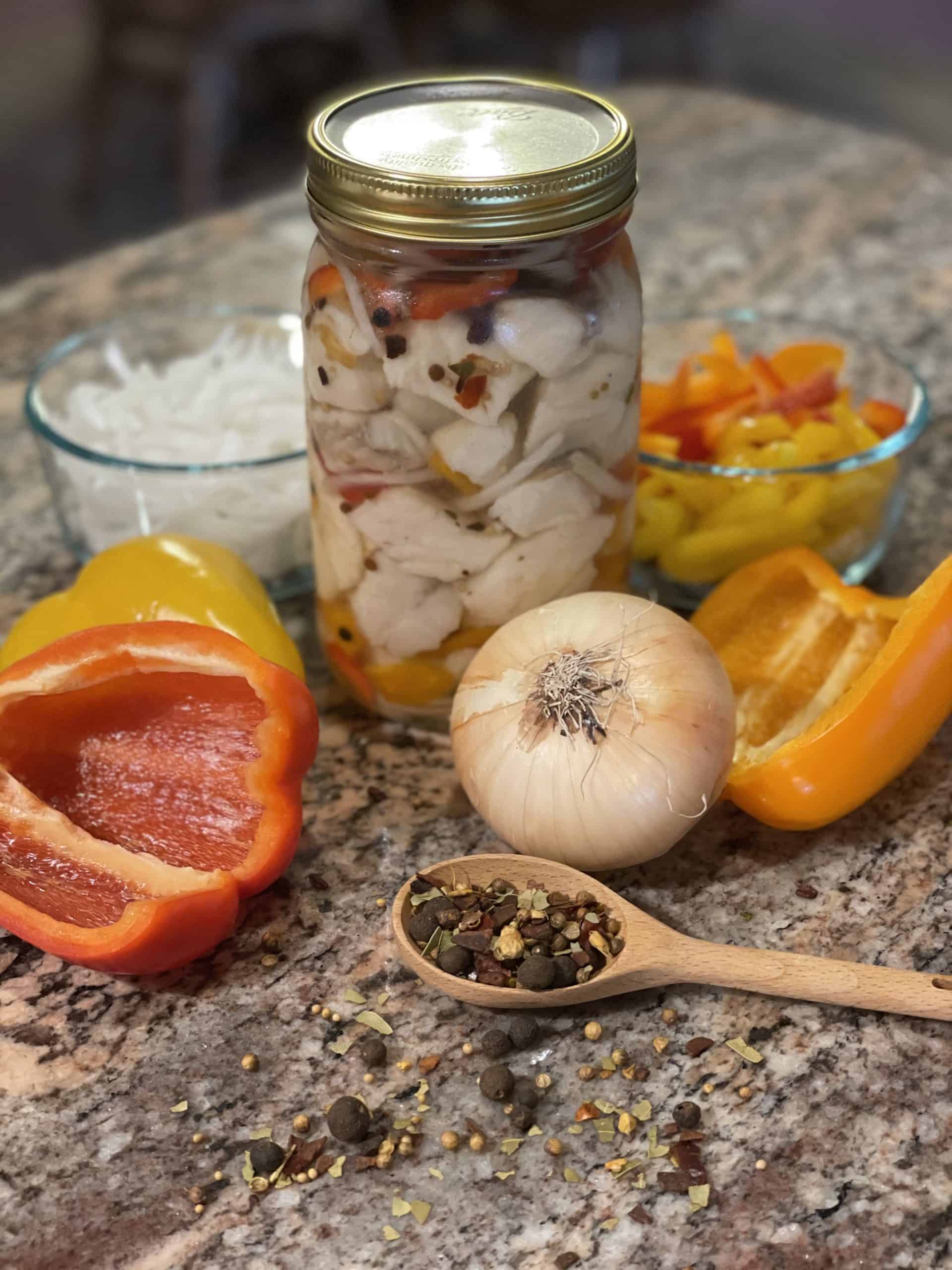
Pickled Northern Pike is the perfect addition to your next charcuterie board. My mom used to make this when I was a kid, and I would not even think about eating it. Yuck, raw fish!!
But as I grew up the taste of pickle fish grew on me. This is a delicacy that our whole family enjoys on a simple charcuterie tray served at almost every holiday.
My husband has now carried on the tradition of making this tasty treat for our family. Using this 2-step curing process, you will learn how to pickle fish like a pro!!
Every ice fishing season my husband, Randy, has an abundance of freshly caught Northern pike. The beautiful Michigan lakes provide our family with fresh fish several times a week.
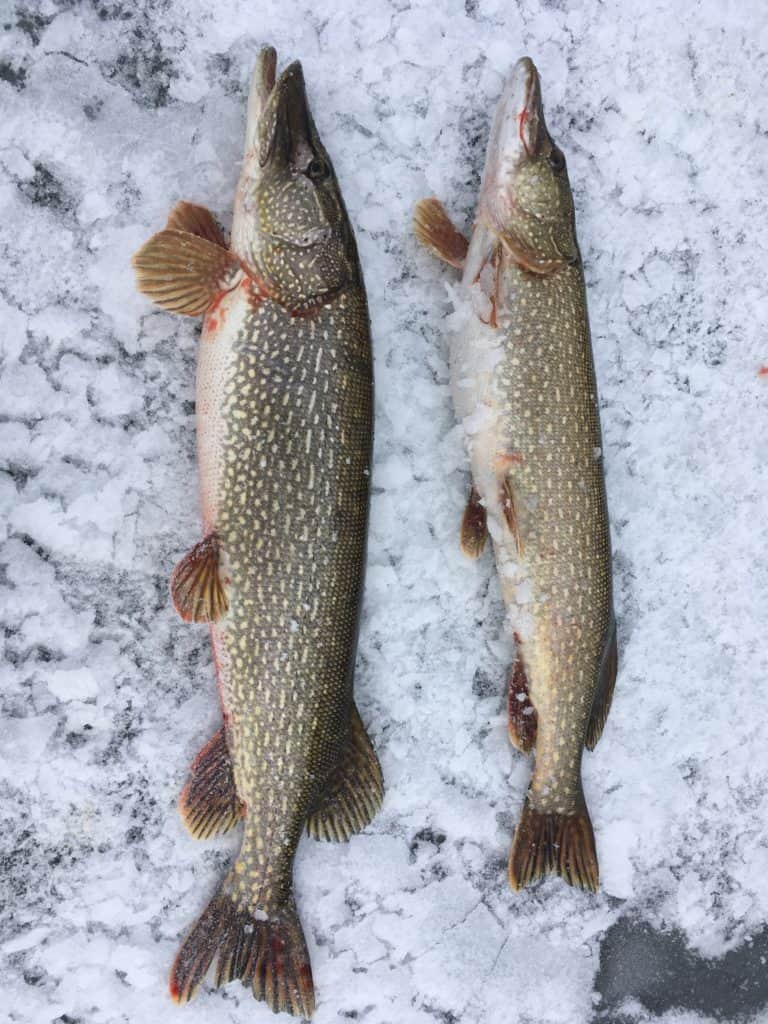
He likes to make a batch of pickled pike that can be preserved and then eaten on a simple butter cracker.
As an Amazon Associate, a Walmart Affiliate, and a member of other affiliate programs, I earn from qualifying purchases. This page contains affiliate links. Click on the highlighted text in a post to explore a product. If you purchase through one of them, I will receive a commission (at no additional cost to you). I ONLY EVER ENDORSE PRODUCTS THAT I TRULY LOVE. Thank you for your support!
What Kind of Fish Can Be Pickled?
Pike is the preferred Michigan fish for pickling in our family, but other firm whitefish can be used like: pollock, bass, cod, haddock, halibut, catfish, snapper, tilapia, herring, mahi mahi and even salmon.
Does Pickling Fish Dissolve Bones?
Yes, if you follow my step by step curing process, this will dissolve the bones in your fish.
The most important thing is to give your fish time to soak in the salt and vinegar solution and then let the fish sit in the brine solution. If you skip the curing time, then you will more than likely have bones in your pickled fish.
Pickled Northern Pike Recipe
Gather all of your ingredients to make your pickled pike recipe. This pike recipe is a 10-day curing process which is in 2 steps.
Brine for Pickling Fish
The first phase of this curing process is when the fish is soaked in the salt and vinegar for 5 days to dissolve the bones. It is very important to soak the fish for the full 5 days or you will have bones and the fish will not be as tender as you would hope for.
First Step: Cut the skinned fish fillets into 1-inch pieces. Place fish into a large storage container. For each quart of fish add 3/4 cup of plain, table salt. Cover with enough white vinegar (about 2 cups per quart) and refrigerate 5 days, stirring each day.

How to Pickle Fish – Northern Pike
Second Step: After the 5 days of soaking the fish, the second phase is to make the pickling solution to store the salt cured pike in. A little sweet with a vinegar tang paired with the pickling spice makes this solution the perfect complement to your 5 day salt brined northern pike.

Pickling Solution for Pickling Fish
Pickling Solution: Enough to cover 1 quarts of fish. Heat 2 cups of white vinegar with 1 1/2 cups of granulated sugar and 2 tablespoons of pickling spice to a boil. Set aside and let cool completely.
How to Pack the Pickle Pike Jar
Third Step: After the 5 day of soaking the fish in the salt and vinegar solution the third phase is to wash the meat off. Rinse the fish in cold water TWICE!! That’s right, 2 times! Let stand in cold water each time for ½ hour. Drain all of the water off.

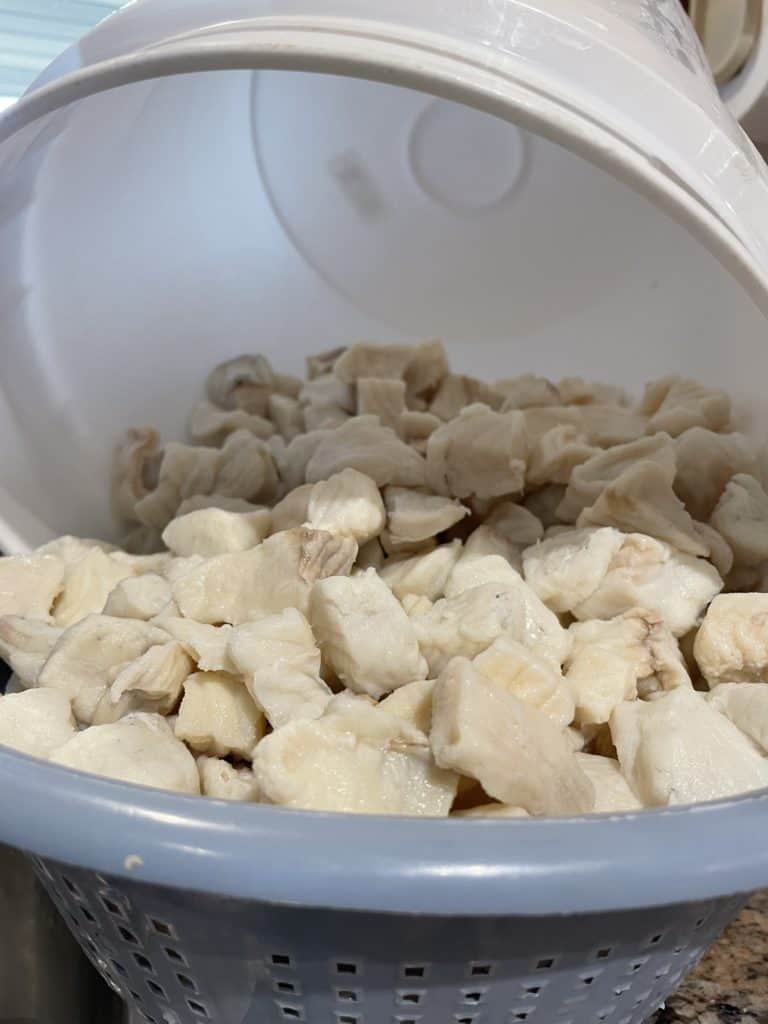
Fourth Step: Slice the onion and the bell pepper into thin strips. Make sure that the brine is completely cooled. The fourth phase is to pack the wide mouth jar, making sure to layer each item. Start with a layer of fish. Then add a layer of the sliced onions and peppers. Continue to layer until all of the fish is packed in the jar.



Keep Refrigerated
Refrigerate: Pour the COLD brine solution over the fish making sure to completely cover everything in the jar. Refrigerate at least 5 more days. Pickled fish is ready after sitting for 5 days but gets better and better the longer that it is stored in the refrigerator. Keep the pickled fish in the refrigerator making sure to keep the fish covered in the pickling solution.
Pickling is an easy method of preserving fish. This pickled fish recipe must be stored in the refrigerator at no higher than 40 degrees F (refrigerator temperature) and for best flavor must be used within 4 to 6 weeks.
The serving of pickled fish on Good Friday is a uniquely South African tradition with a history that’s as mysterious as the sea itself. One thing everyone agrees on is that this food tradition hails from the Western Cape.

Holiday Charcuterie Board
Serve this pickled pike with homemade beef summer sausage, sliced cheese, and an assortment of crackers to make a meat and cheese charcuterie board for special gatherings!
I like to make smoked fish, smoked fish dip, venison sticks, and smoked queso dip to add to the board. If you want to add more pickled recipes, try this delicious pickled green tomatoes.

Pickled Pike – Frequently Asked Question
This pickled pike recipe is ready to eat after 10 days (5 days of brine and 5 days of pickling spice solution) but gets better and better the longer it sits in the brine.
The rule of thumb is about 8 weeks, but your nose will let you know when the pickled northern pike goes bad.
DO YOU WANT TO GRIDDLE LIKE A PRO?

Pickled Pike Recipe
For the full recipe and nutrition facts, click below.
Pickled Pike
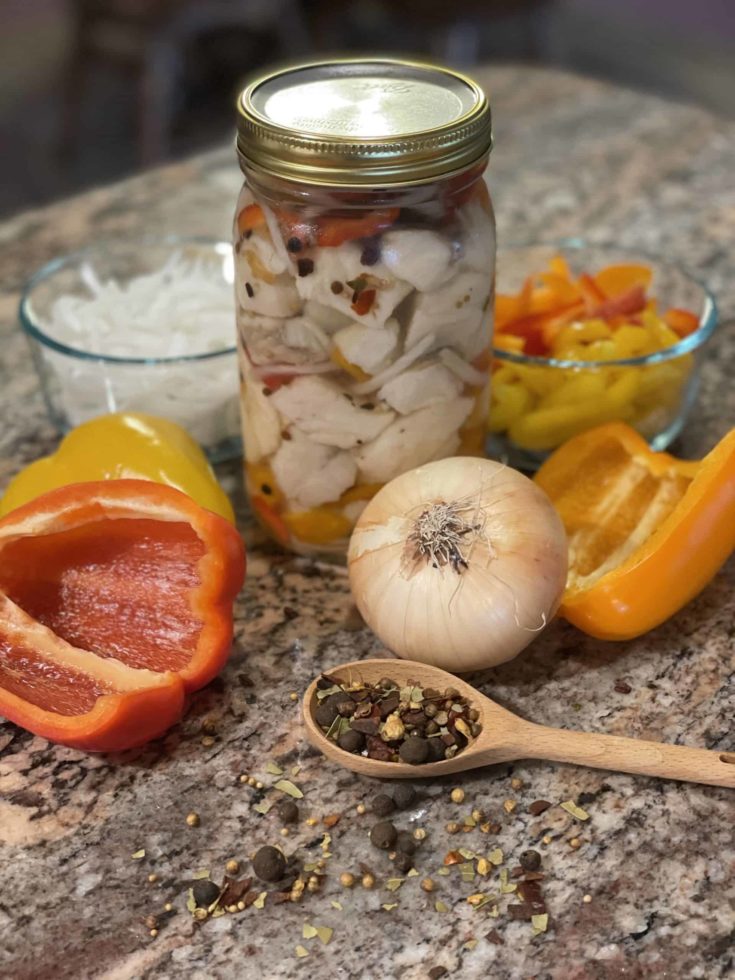
This best Pickled Pike recipe is packed with flavor that is traditionally served during holiday gatherings. What a delicious way to preserve extra pike and enjoy it days later!! The best part is there are no bones!
Ingredients
- Northern Pike - cut into 1 inch pieces 1 lb
- Salt, Iodized/Table 1/2 cup
- Vinegar, White (Divided, Brine - 1 1/2 cup, Pickling Solution - 2 cups) 3 1/2 cups
- Sugar, Granulated 1 1/2 cup
- Pickling Spice 2 Tablespoons
- Pepper, Bell 1 each
- Onion, Sweet White - Medium 1 each
Instructions
- Gather all of your ingredients to make your pickled pike recipe. This pike recipe is a 10-day curing process which is in 2 steps.
- Brine for Pickling Fish
The first step is to cut the skinned fish fillets into 1-inch pieces. Place fish into a large storage container. - For each quart of fish add 3/4 cup of plain, table salt.
- Cover with enough white vinegar (about 2 cups per quart) and refrigerate 5 days, stirring each day. The first phase of this curing process is when the fish is soaked in the salt and vinegar for 5 days to dissolve the bones. It is very important to soak the fish for the full 5 days or you will have bones and the fish will not be as tender as you would hope for.
- How to Pickle Fish – Northern Pike
After the 5 days of soaking the fish, the second phase is to make the pickling solution to store the salt cured pike in. A little sweet with a vinegar tang paired with the pickling spice makes this solution the perfect complement to your 5 day salt brined northern pike. - Pickling Solution for Pickling Fish
Solution is enough to cover 1 quarts of fish. Heat 2 cups of white vinegar with 1 1/2 cups of granulated sugar and 2 tablespoons of pickling spice to a boil. - Set aside and let cool completely.
- How to Pack the Pickle Pike Jar
After the 5 days of soaking the fish in the salt and vinegar solution the third phase is to wash the meat off. Rinse the fish in cold water TWICE!! That’s right, 2 times! - Let stand in cold water each time for ½ hour. Drain all of the water off.
- Slice the onion and the bell pepper into strips.
- Make sure that the brine is completely cooled.
- The fourth phase is to pack the wide mouth jar, making sure to layer each item. Start with a layer of fish.
- Then add a layer of the sliced onions and peppers. Continue to layer until all of the fish is packed in the jar.
- Pour the COLD brine solution over the fish making sure to completely cover everything in the jar.
- Refrigerate at least 5 more days.
- Pickled fish is ready after sitting for 5 days but gets better and better the longer that it is stored in the refrigerator.
- Keep the pickled fish in the refrigerator making sure to keep the fish covered in the pickling solution.
Notes
What Kind of Fish Can Be Pickled?
Pike is the preferred Michigan fish for pickling in our family, but other firm whitefish can be used like: pollock, bass, cod, haddock, halibut, catfish, snapper, tilapia, herring, mahi mahi and even salmon.
Does Pickling Fish Dissolve Bones?
Yes, if you follow my step by step curing process, this will dissolve the bones in your fish. The most important thing is to give your fish time to soak in the salt and vinegar solution and then let the fish sit in the brine solution. If you skip the curing time, then you will more than likely have bones in your pickled fish.
When Should You Eat Pickled Fish?
This pickled pike recipe is ready to eat after 10 days (5 days of brine and 5 days of pickling spice solution) but gets better and better the longer it sits in the brine.
How Long Does Pickled Pike Last?
The rule of thumb is about 8 weeks, but your nose will let you know when the pickled northern pike goes bad. Pickling is an easy method of preserving fish. This pickled fish recipe must be stored in the refrigerator at no higher than 40 degrees F (refrigerator temperature) and for best flavor must be used within 4 to 6 weeks.
Recommended Products
As an Amazon Associate, I earn from qualifying purchases. This page contains affiliate links. Click on the highlighted text in a post to explore a product. If you purchase through one of them, I will receive a commission (at no additional cost to you). I ONLY EVER ENDORSE PRODUCTS THAT I HAVE PERSONALLY USED. Thank you for your support!
Nutrition Information
Yield
15Serving Size
1Amount Per Serving Calories 118Total Fat 0gSaturated Fat 0gTrans Fat 0gUnsaturated Fat 0gCholesterol 33mgSodium 948mgCarbohydrates 21gFiber 0gSugar 20gProtein 8g
Note: For exact nutritional information, consult your dietitian. All nutritional information is simply a guideline.
Did you enjoy this recipe? Your comment and 5-star rating take just seconds but helps other readers and helps our site gain more readers! Thank you for taking the time to share your comments!
Stay in touch with me through social media!
Tried this recipe? Snap a picture and tag #frommichigan2019 on Instagram @frommichigan2019.
Join my Blackstone Griddle Facebook Pages:
Subscribe to my YouTube channel – Sherry Ronning – to get notification of my latest videos.
If you enjoy this recipe, you may enjoy the following: Easy Pickle Fish & Smoked Salmon
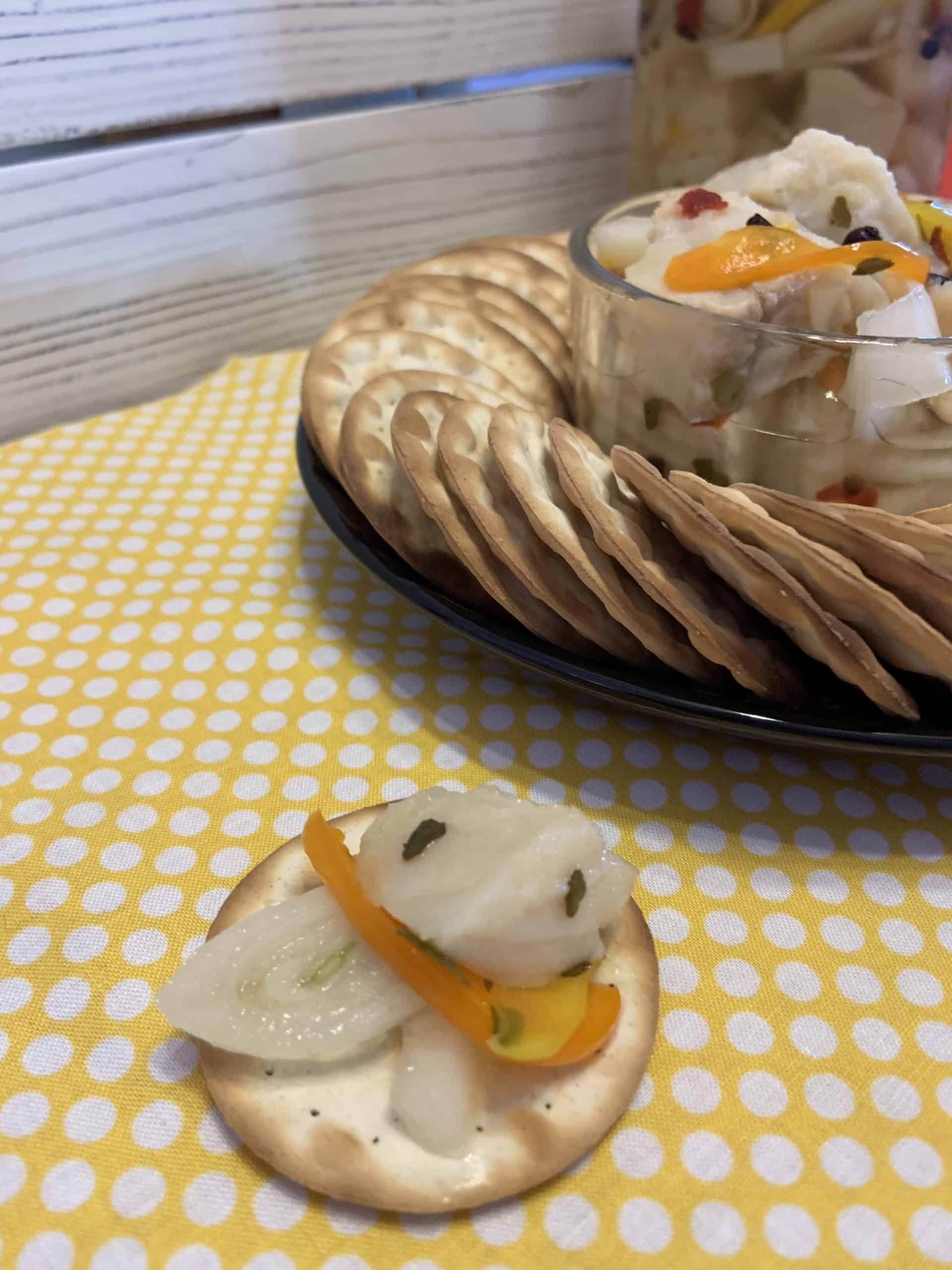
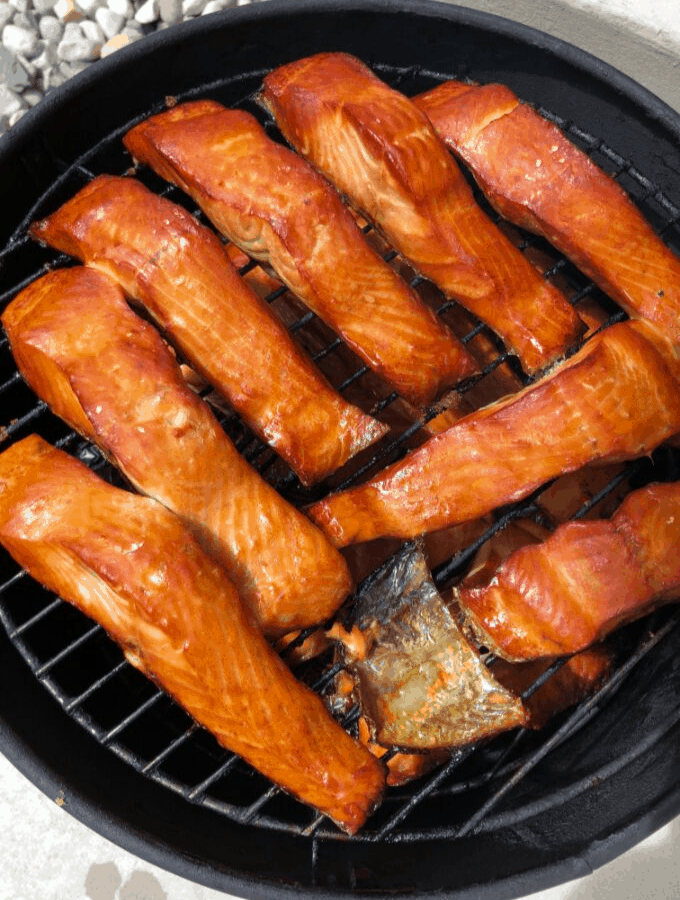


We don’t like onions that much can we make the recipe without onions or should we substitute another vegetable
You can leave out the onions in this recipe. If you would like to substitute more peppers or another vegetable you can.
Absolutely perfect recipe. Followed exactly and turned out great…
Question: as we head into summer any reason why we can’t freeze northern until we build up enough to make a big batch ?
Yes, you can freeze fish before you pickle it. That is what we do to get enough to make a good sized batch.
Is the pike supposed to be firm, not soft? Just curious as to what to expect after brine & then pickling. Trying it now. Can’t wait for results!
Yes, the pike should be firm after coming out of the brine.
We just returned from fishing in Canada, and have a lot of pike in the freezer. My husband is really excited to make this recipe. Question, can I use pickling salt or should we only use iodized table salt?
I think you can use pickling salt. I don’t think we have have ever tried it with pickling salt but I don’t see why you can’t. If you try it, let me know how it turns out.
I love to ice fish for pike. I normally release all of them. I decided to keep one this year to try this recipe because I love pickled herring and figured I’d give pike a try. I followed the recipe to the letter. Opened a jar today and it is amazing! This is better than any store bought pickled fish. I guess I’ll start keeping a few fish just for this recipe. I’m going to experiment with some other varieties of fish too.
I am so happy that you like my pickle fish recipe! My family has been making this pickled recipe for many, many years so we know that it is a tried and true recipe.
Will 1 lb of pike fi t in 1 quart jar?
Yes, one pound of fish will fit into a quart jar along with the sliced onion, peppers, and pickling solution.
I see a lot of recipes saying that you must first freeze the cut up pike for 48 hours to kill off parasites like tape worms before brining. What are your thoughts?
If it’s a concern for you, then I would suggest that you freeze the fish for 48 hours. We have made this recipe with and without freezing the fish and have never had a problem with the fish. But all fish is different depending on where you get it from and how it is handled during cleaning and storing.